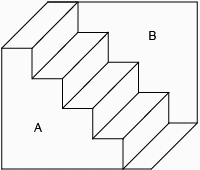The Stroop Effect, named after J. Ridley Stroop who published the effect in 1935, is a demonstration of interference in the reaction time of a task. For example, when a word signifying a colour such as “red” is printed in blue a reader’s reaction time processing the word’s colour, leads to slower test reaction times and an increase in mistakes.
Try out one of my favourite demonstrations of this effect by saying the colours of the words below:
(For example if the word “blue” is printed in green, you would say the word green)
red blue orange yellow purple green blue yellow red blue orange purple yellow green blue red green orange purple
yellow orange red green blue green red green blue yellow orange purple green blue yellow red orange purple green
If naming the first group of colours is easier and quicker than the second, then your performance exhibits the Stroop effect.
The Stroop effect illustrates important principles about how the brain works, particularly for mental tasks involving attention, automatic processing, and response selection. It also can be used to examine the subtle effects of adverse conditions on the brain, such as lack of sleep, fatigue, or the effects of high altitudes.
The coloured word test above is only one kind kind of automatic processing that can be studied.
Check out Harvard University’s site in which they continually collects data with their Implicit Association Tests, many of which have fascinating social and political implications.
